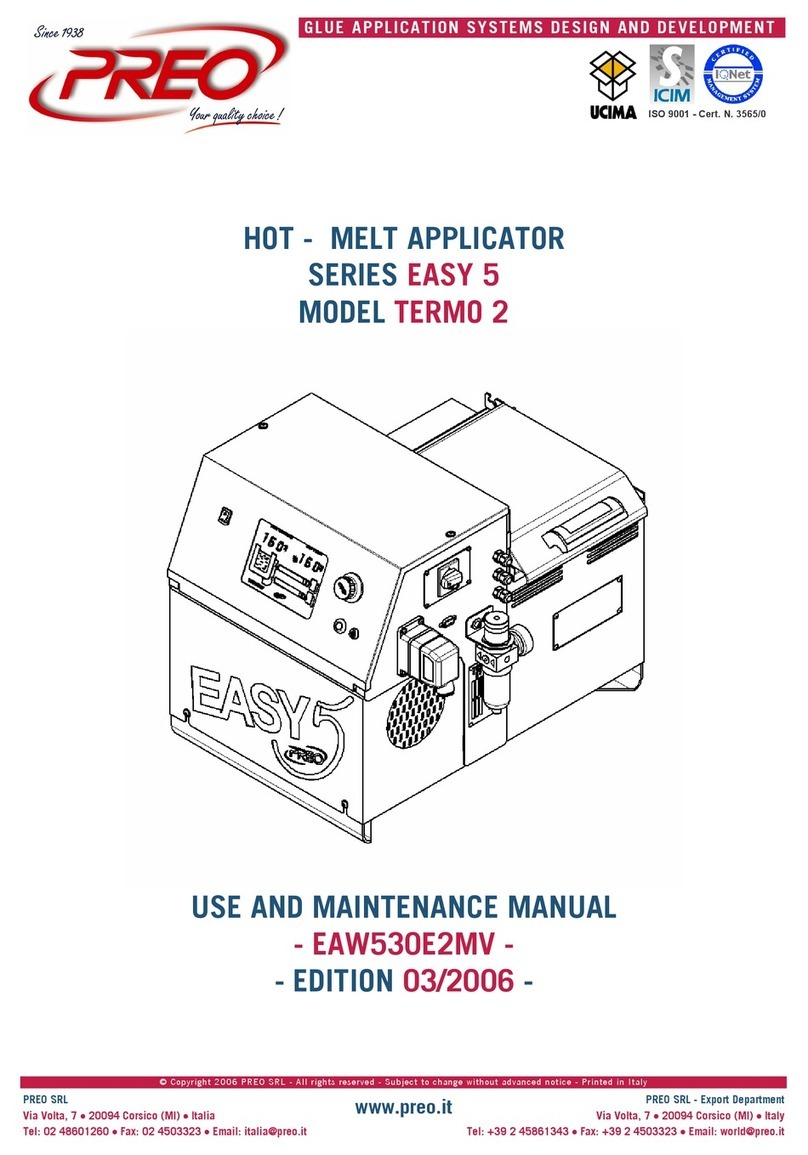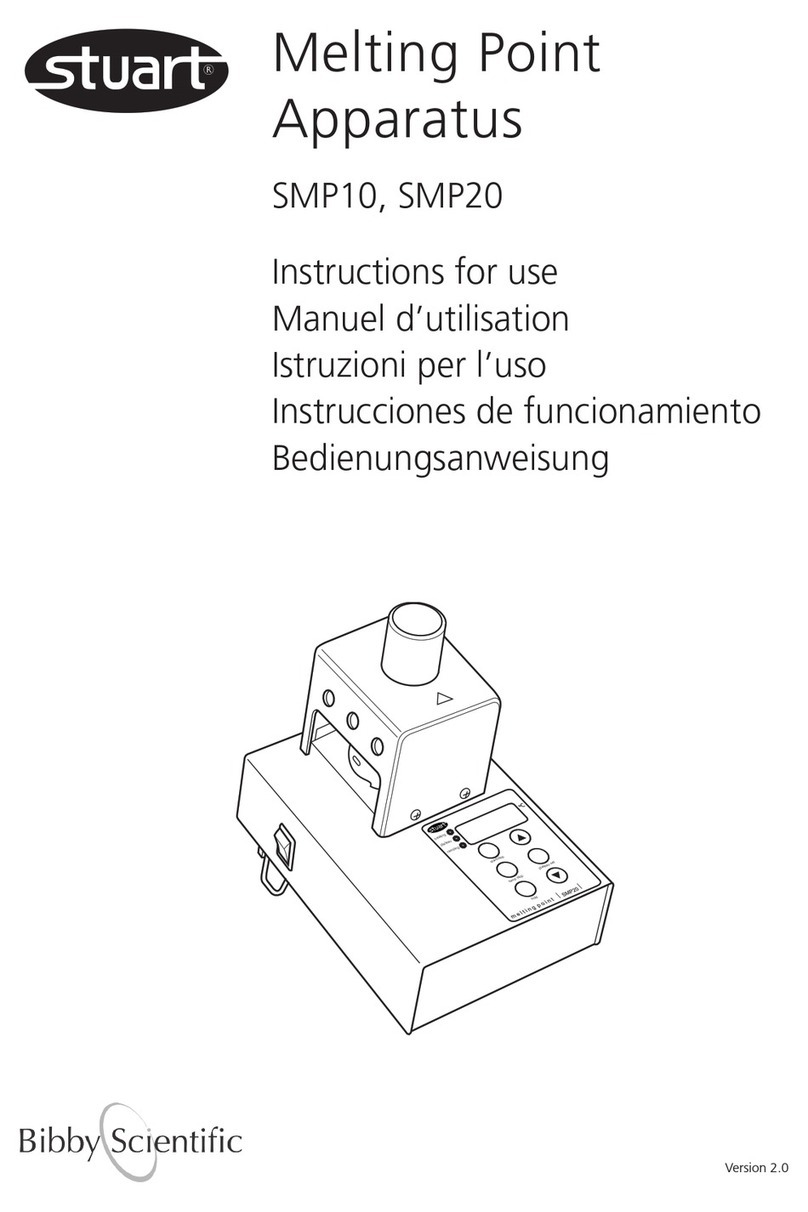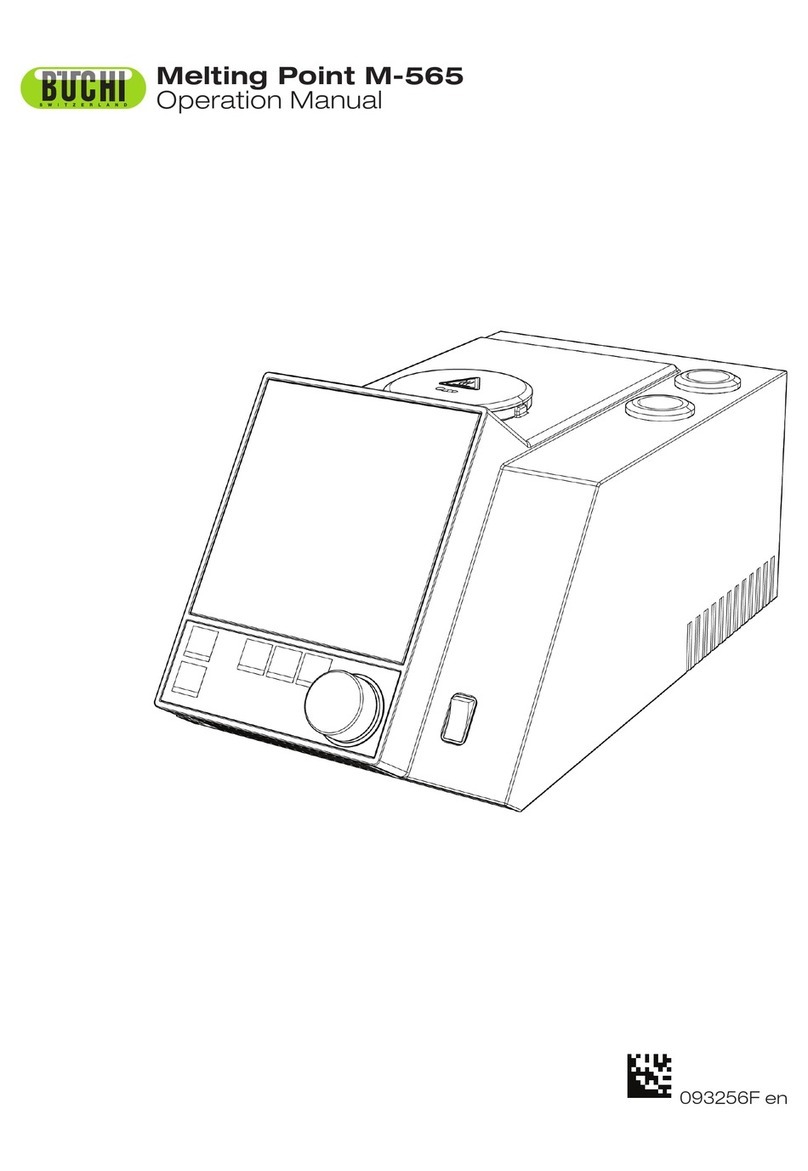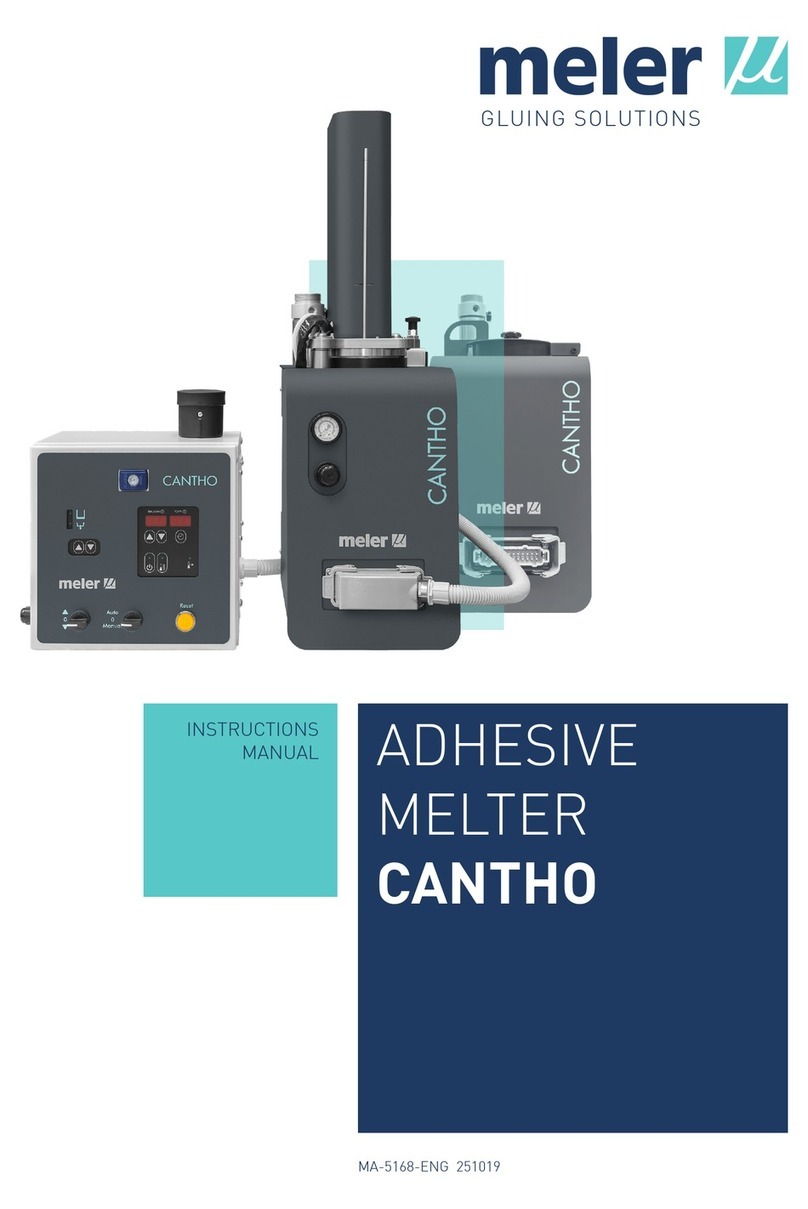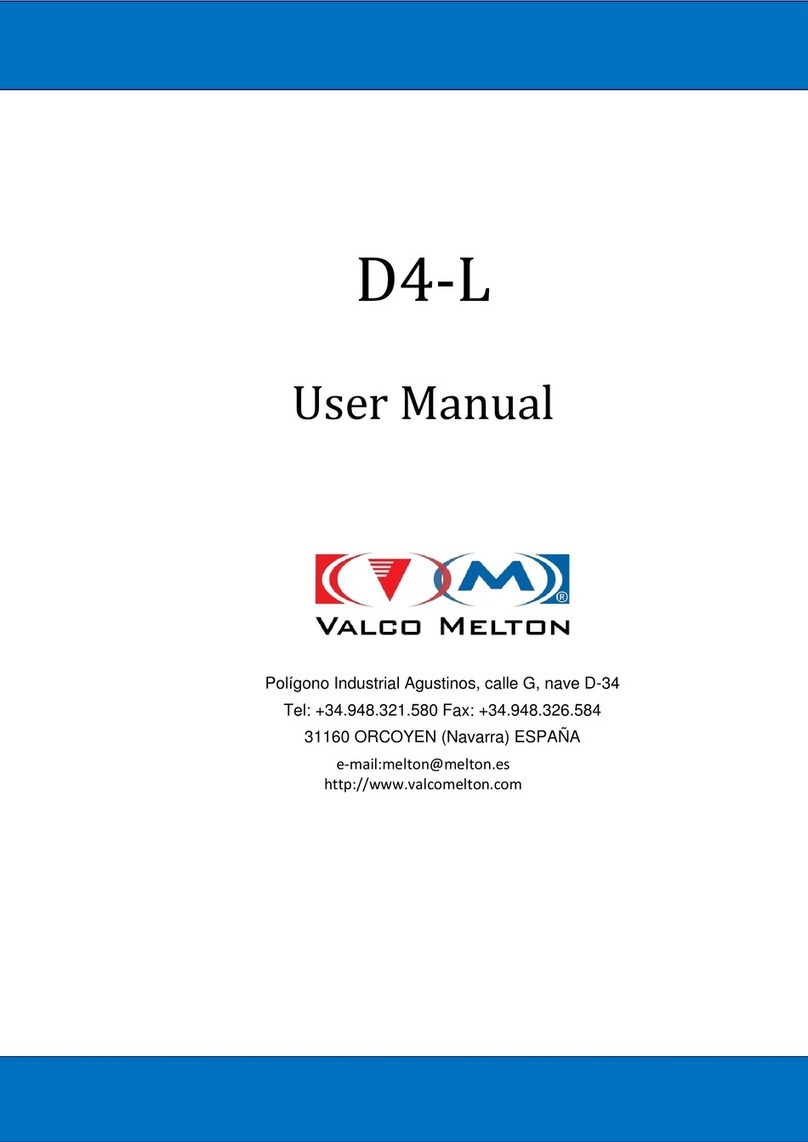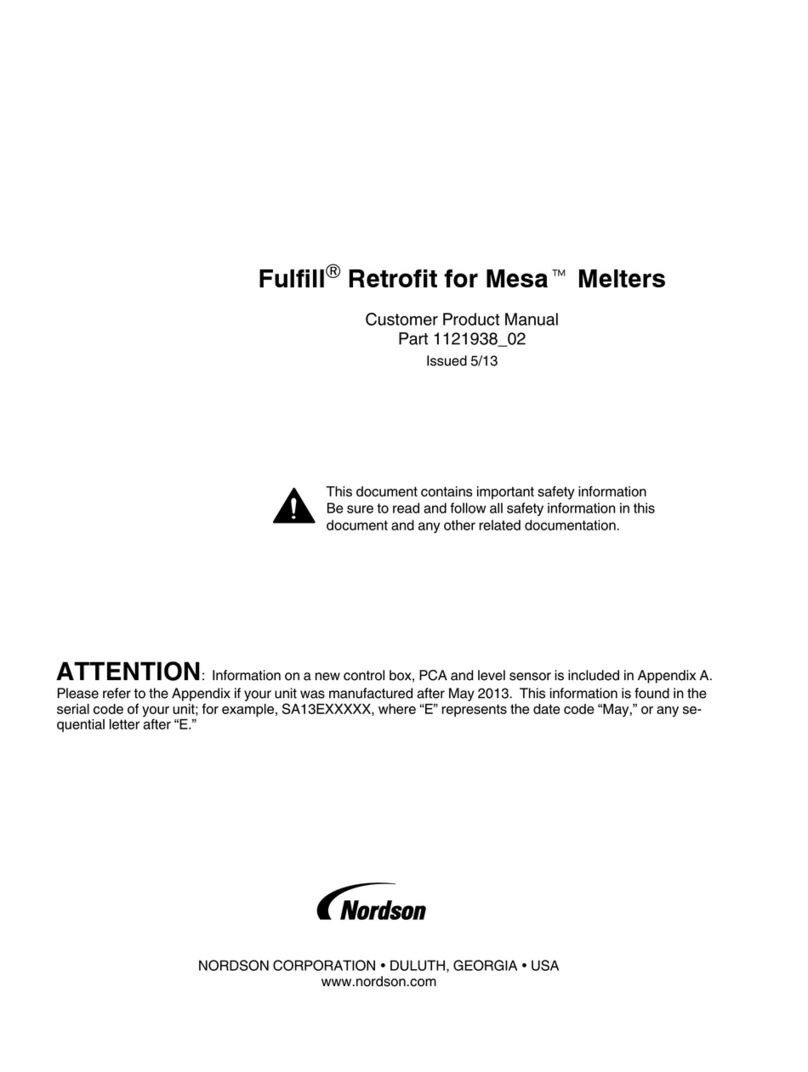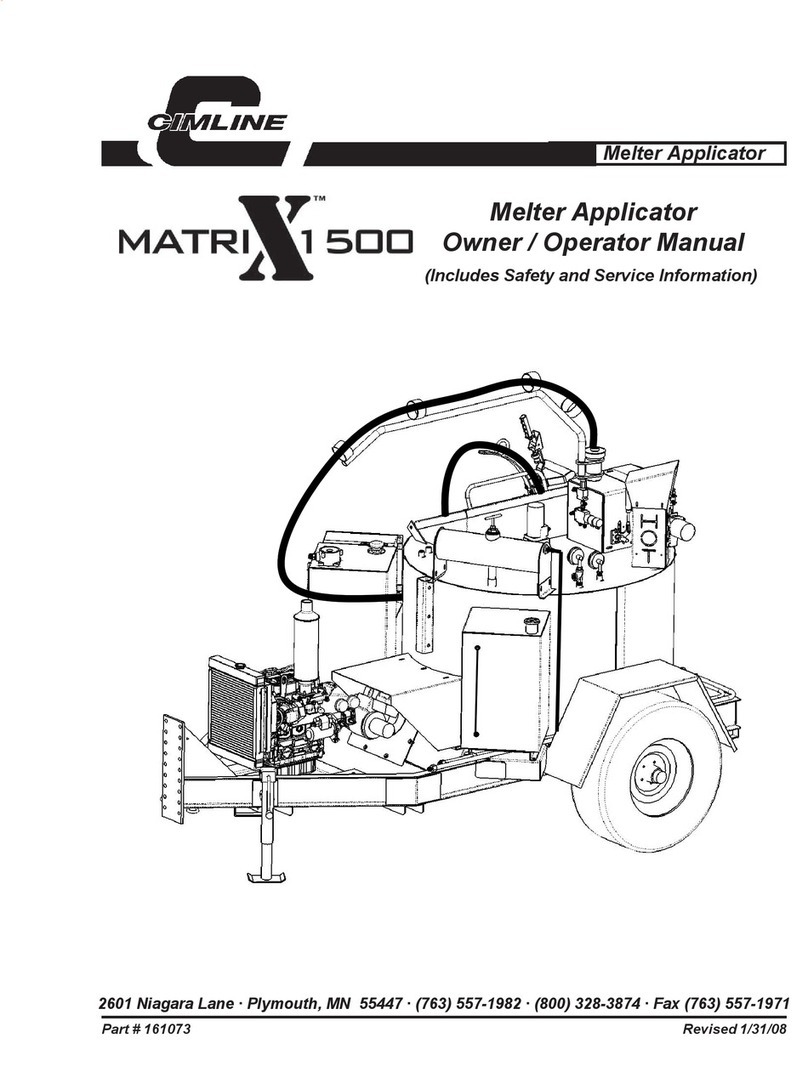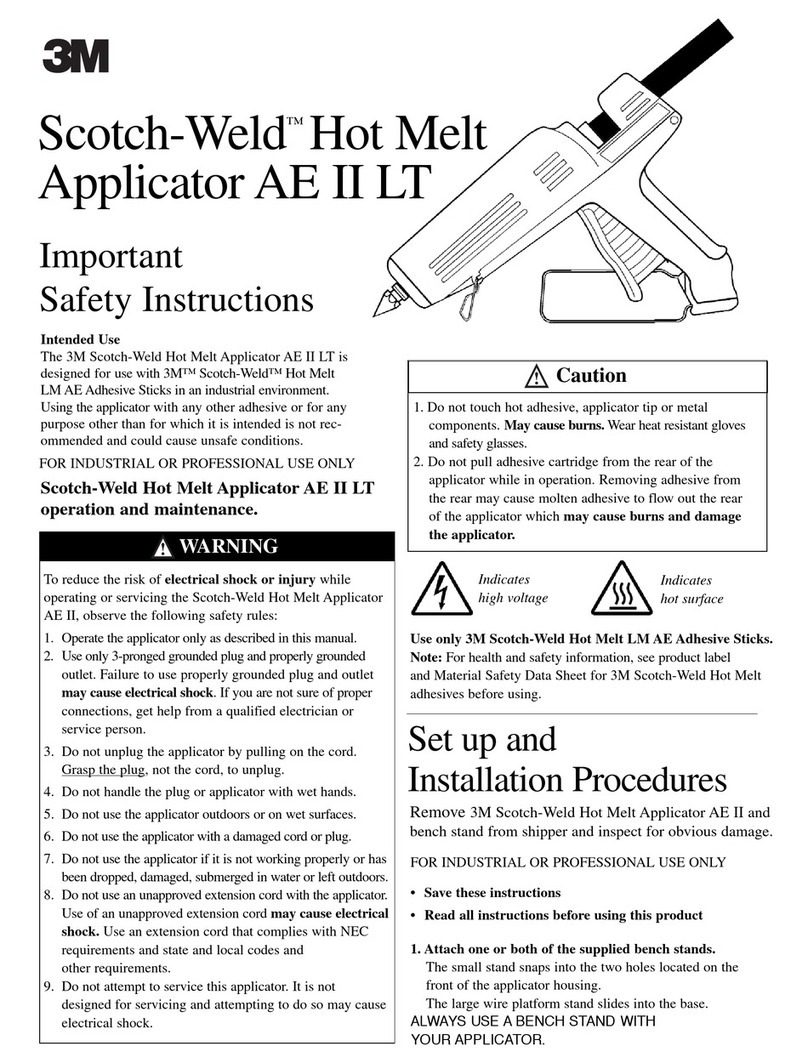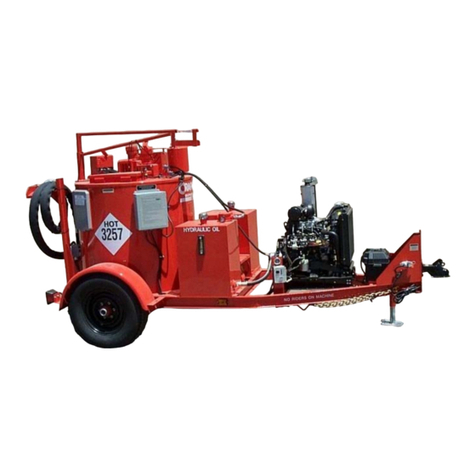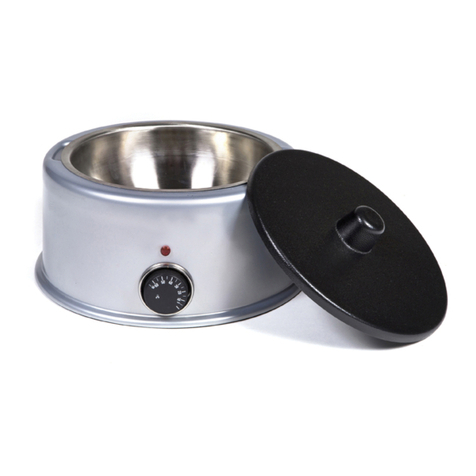Summit Radiant Edge HotSlot Operating instructions

Radiant Edge HotSlot
™
Ice Melt System
Installation and Operation Guide
Version 1.2
From This . . .
To This . . .
Thermodynamics analyzed. Applied.
TM
Summit Ice Melt Systems, Inc.
2 11 Lake Forest Road PO Box 6 28
Tahoe City, CA 6145
p/530-583-8888 f/530-583-7777
www.summiticemelt.com

Summit Ice Melt Systems
PO Box 6 28, Tahoe City, CA 6145
Ph: 530-583-8888 Fax: 530-583-7777
www.SummitIceMelt.com
Radiant Edge HotSlot Ice Melt System
Installation and Operation Guide
This step-by-step Installation and Operation Guide provides the
tools necessary to install the Patent-Pending Summit Ice Melt
Systems' Radiant Edge HotSlot roof de-icing system.
For other applications or for design assistance, and to ensure
you have the most up-to-date information, contact your Summit
Ice Melt Systems representative or phone Summit Ice Melt
Systems at (530) 583-8888. Also visit our web site at
www.summiticemelt.com.
Page 1 of 2

Summit Ice Melt Systems
PO Box 6 28, Tahoe City, CA 6145
Ph: 530-583-8888 Fax: 530-583-7777
www.SummitIceMelt.com
Table of Contents
Page
Introduction
How To Use This Guide . . . . . . . . . . . . . . . . . . . . . . . . . . . . . . . . . . . . 3
Other Required Documents . . . . . . . . . . . . . . . . . . . . . . . . . . . . . . . . . . . 4
Safety Guidelines, Document Conventions . . . . . . . . . . . . . . . . . . . . . . . . . . . . 5
System Overview
6
System Components . . . . . . . . . . . . . . . . . . . . . . . . . . . . . . . . . . . . . . 6
General Procedures . . . . . . . . . . . . . . . . . . . . . . . . . . . . . . . . . . . . . . 7
Tools Required . . . . . . . . . . . . . . . . . . . . . . . . . . . . . . . . . . . . . . 7
Additional Materials Needed . . . . . . . . . . . . . . . . . . . . . . . . . . . . . . . . . . .
. . .
7
Installation
Roof Preparation . . . . . . . . . . . . . . . . . . . . . . . . . . . . . . . . . . . . . . . . . 8
HotSlot Panel Installation . . . . . . . . . . . . . . . . . . . . . . . . . . . . . . . . . . . . . . -10
Valley Installation . . . . . . . . . . . . . . . . . . . . . . . . . . . . . . . . . . . . . . 11
Heating Cable Installation . . . . . . . . . . . . . . . . . . . . . . . . . . . . . . . . . . .
. . .
12-14
Electrical Testing (Megohmeter and Continuity tests) . . . . . . . . . . . . . . . . . . . . 15-16
Electrical Hookup . . . . . . . . . . . . . . . . . . . . . . . . . . . . . . . . . . . . . . . . . 17
4CDC Controller, Operation
Overview . . . . . . . . . . . . . . . . . . . . . . . . . . . . . . . . . . . . . . . . . . . . . . . . . . . . . 18
Controller Operation, Installation, and Pre-Season Testing . . . . . . . . . . . . . . . 1
Changing Controller Set-Point Values, Error Messages. . . . . . . . . . . . . . . . . . 20
Figure H: 4 CDC Control Module; Figure G: 4CDC Schematic Diagram. . . . . 21
System Operation Procedures: Description, Testing, Startup, Shutdown. . . . 22
Reference, arranty Forms
Installation Log & Extended Warranty Form (Important - Time-sensitive). . 23
Troubleshooting Guide . . . . . . . . . . . . . . . . . . . . . . . . . . . . . . . . . . . . . . . . . . . 24-25
Heating Cable Construction and Technology . . . . . . . . . . . . . . . . . . . . . . . . . . 26
Heating Cable Specifications . . . . . . . . . . . . . . . . . . . . . . . . . . . . . . . . . . . . . . 27
Heating Cable Description . . . . . . . . . . . . . . . . . . . . . . . . . . . . . . . . . . . . . . . . 28
Heating Cable Maximum Circuit Lengths and Amp Load . . . . . . . . . . . . . . . . 2
Page 2 of 2

Summit Ice Melt Systems
PO Box 6 28, Tahoe City, CA 6145
Ph: 530-583-8888 Fax: 530-583-7777
www.
SummitIceMelt.com
Introduction
Radiant Edge is a roof edge ice melt system that minimizes ice formations
on the following applications:
• Roofs made from standard roofing materials, including shakes,
shingles, rubber, hot tar, wood, metal, and plastic.
• Gutters and downspouts made from standard materials, including
metal and plastic.
The guide does not cover applications in which any of the following
conditions exist:
• Preventing snow movement on roofs — Radiant Edge will not keep
snow or ice from falling off the roof. Radiant Edge is designed to minimize
ice formations and safely remove melt water from roof eaves. Snow fences
or snow guards should be used to eliminate snow movement.
• Melting snow off a roof and/or reduction of snow load. Radiant Edge is
designed to melt ice, not accumulated snow.
HotSlot is intended for lighter ice and snow conditions on certain metal and
composition shingle roofs. If conditions warrant, consider the more robust,
patented Radiant Edge PRO
TM
or LT
TM
ice melt systems.
For the names of manufacturers of snow guards or snow fences, contact
your Summit Ice Melt Systems' representative, or contact Summit Ice Melt
Systems' directly at (530) 583-8888.
If your application conditions are different, or if you have any questions,
contact your Summit Ice Melt Systems' representative, or contact Summit
Ice Melt Systems directly at (530) 583-8888.
How To Use This Guide
This installation guide presents Summit Ice Melt Systems’
recommendations for installing the Radiant Edge HotSlot roof edge ice
melt system. It provides design and performance data, heating cable
layout installations, electrical hookup and testing. Following these
recommendations will result in a reliable, energy-efficient system. Read
and understand this entire guide before installation.
Page 3 of 2

IMPORTANT NOTICE:
• Area laws differ concerning the handling and installation of heating
cables, building materials, electrical connections, etc.
• Please check and comply with your local laws.
• Summit Ice Melt Systems, Inc. will not be held responsible for those who do not
comply with their local or national laws while installing its products.
Summit Ice Melt Systems
PO Box 6 28, Tahoe City, CA 6145
Ph: 530-583-8888 Fax: 530-583-7777
www.SummitIceMelt.com
Other Required Documents
This guide is not intended to provide comprehensive installation
instructions. For complete Radiant Edge HotSlot de-icing system
installation instructions, please refer to the following additional required
documents:
• Additional installation instructions that are included with the heating
cable power connection kits, thermostats, controllers, and accessories.
If you do not have these documents, you can obtain them from the
Summit Ice Melt Systems web site at www.summiticemelt.com.
Ensure you are using the most current edition of the Installation and
Operation Guide by contacting info@summiticemelt.com.
For products and applications not covered by this design guide, please
contact your Summit Ice Melt Systems' representative, or contact Summit
Ice Melt Systems directly at (530) 583-8888.
Page 4 of 2

Summit Ice Melt Systems
PO Box 6 28, Tahoe City, CA 6145
Ph: 530-583-8888 Fax: 530-583-7777
www.SummitIceMelt.com
Safety Guidelines and Document Conventions
As with any electrical equipment, the safety and reliability of any system
depends on the manner in which they are installed and maintained.
Incorrect design, handling, installation, or maintenance of any of the
system components could damage the system and may result in
inadequate performance, overheating, electric shock, or fire. To minimize
these risks and to ensure that the system performs reliably, read and
carefully follow the information, warnings, and instructions in this guide.
This symbol identifies important instructions or information.
This symbol identifies particularly important safety warnings that must be
followed.
ARNING: To minimize the danger of fire from sustained electrical arcing
if the heating cable is damaged or improperly installed, and to comply with
the requirements of Summit Ice Melt Systems, agency certifications, and
national electrical codes, ground-fault equipment protection must be used
on each heating cable branch circuit. Arcing may not be stopped by conventional
circuit protection.
Please exercise all safety precautions necessary when using ladders,
scaffolding, tools.
Page 5 of 2

Summit Ice Melt Systems
PO Box 6 28, Tahoe City, CA 6145
Ph: 530-583-8888 Fax: 530-583-7777
www.SummitIceMelt.com
System Overview
Summit Ice Melt Systems’ Radiant Edge HotSlot system can prevent ice
dams and icicles by maintaining a continuous path for melt water to drain
from the roof. HotSlot system uses a sophisticated self-regulating heating
cable which reduces heat output automatically as the heating cable
warms to above freezing, resulting in lower energy use while eliminating
the possibility of overheating. A typical Summit Ice Melt system includes
the HotSlot Panels, self-regulating heating cables, heating cable
connection kits, control system and power distribution.
Radiant Edge HotSlot is suitable for slopes down to 2/12.
System Components
A typical system may include the following:
• Radiant Edge HotSlot Panels
• Radiant Edge Valley Base Panels
• Radiant Edge Valley Cover Panels
• Waterproof Screws
• S1 (110Vac) or S2 (208-277Vac) self regulating heating cable
• Heating cable connection kits and accessories
• Controller system
• Power distribution
WARNING: The Radiant Edge ice melt system MUST be protected with a
ground fault protection device per local codes and the NEC (National
Electric Code) and CSA (Canadian Standards Association).
Page 6 of 2

Summit Ice Melt Systems
PO Box 6 28, Tahoe City, CA 6145
Ph: 530-583-8888 Fax: 530-583-7777
www.SummitIceMelt.com
General Procedures
1. Review the following:
A. Packing List and materials provided
B. Radiant Edge System Layout drawings (may be sent
separately) with panels identified, junction box and controller
locations noted, sensor location
C. Access Equipment (ladders, scaffolding, safety harnesses,
etc.)
D. On some systems, each cover and base panel is numbered.
If so, position each base piece on the roof as designated in
the Layout Drawings.
Tools Required
• Chop saw, Skilsaw or portable
bandsaw with aluminum / copper
cutting blade
• Megohmeter Tester: 500, 1000,
2500 Vdc
• Multimeter
• Tape Measure
• Tin Snips
• Wire cutter
• Wire stripper
• Straight edge knife
• Drill
• Driver for screws
• 3/8" metal bit
• Deburring tool
• Caulk and caulking gun
Additional Materials Needed
• Cleaning solvent (i.e., denatured
alcohol) and rags for valley areas
• Adhesive
• Masking Tape
• Touch Up Paint
• Roofing Adhesive, DuraLink by
Chemlink, or equal
• Roofing Sealant, DuraSil by
Chemlink, or equal
Page 7 of 2

Summit Ice Melt Systems
PO Box 6 28, Tahoe City, CA 6145
Ph: 530-583-8888 Fax: 530-583-7777
www.SummitIceMelt.com
Installation
Roof Preparation
The proper preparation of the roof is needed to ensure optimal energy
efficiency, performance, and to prevent leaks.
Radiant Edge HotSlot is suitable for slopes down to 2/12.
1. Existing Metal roofs): Trim back metal to flush to the eave
and remove fasteners on bottom 7" of roofing panel prior to
installing HotSlot.
2. Existing Composition Shingle: Carefully pry up second course of
shingles with a broad paint scraper or similar tool. Install HotSlot
along eave on first shingle course and tuck under second course of
shingles.
3. New Composition Shingle: Install starter and first course of
shingles. Install HotSlot along eave on first shingle course.
Continue installing shingles with standard exposure.
4. On other conditions such as existing shakes, slate, tile and
standing seam roofing, consider using the patented Radiant Edge
PRO™ or LT™ ice melt systems.
Page 8 of 2

Summit Ice Melt Systems
PO Box 6 28, Tahoe City, CA 6145
Ph: 530-583-8888 Fax: 530-583-7777
www.SummitIceMelt.com
HotSlot Panel Installation
1. Determine the layout of the system. Place full-sized HotSlot
panels flush to each end of the roof. Tuck top edge under second
course of shingles.
2. The remaining panels shall be installed between the end panels,
and have a minimum 0.25" gap between them.
3. Miter cut HotSlot Panel at valleys, leaving clearance for Radiant
Edge Valley system.
Radiant Edge HotSlot Figure A
For a more waterproof installation on existing shingle roofs, apply a heavy
bead of caulking on the bottom side of the panel around each attachment
hole and along the top flange edge.
Page of 2
This manual suits for next models
1
Table of contents
Popular Melting Machine manuals by other brands

Tekmar
Tekmar Snow Melting Control 680 Installation & operation manual
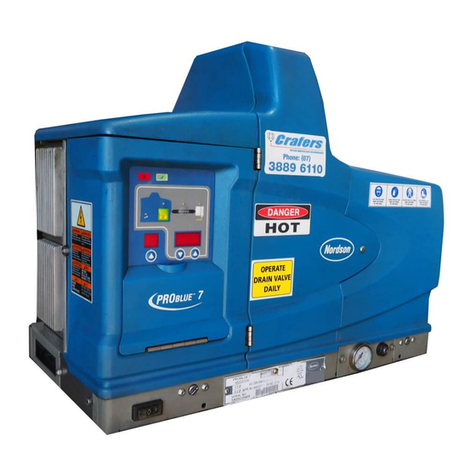
Nordson
Nordson ProBlue P4 Customer product manual
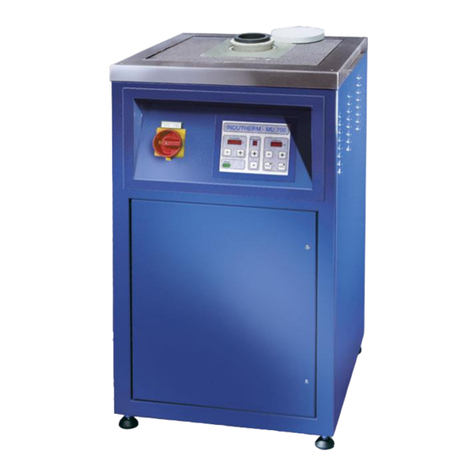
Indutherm
Indutherm MU200 instruction manual
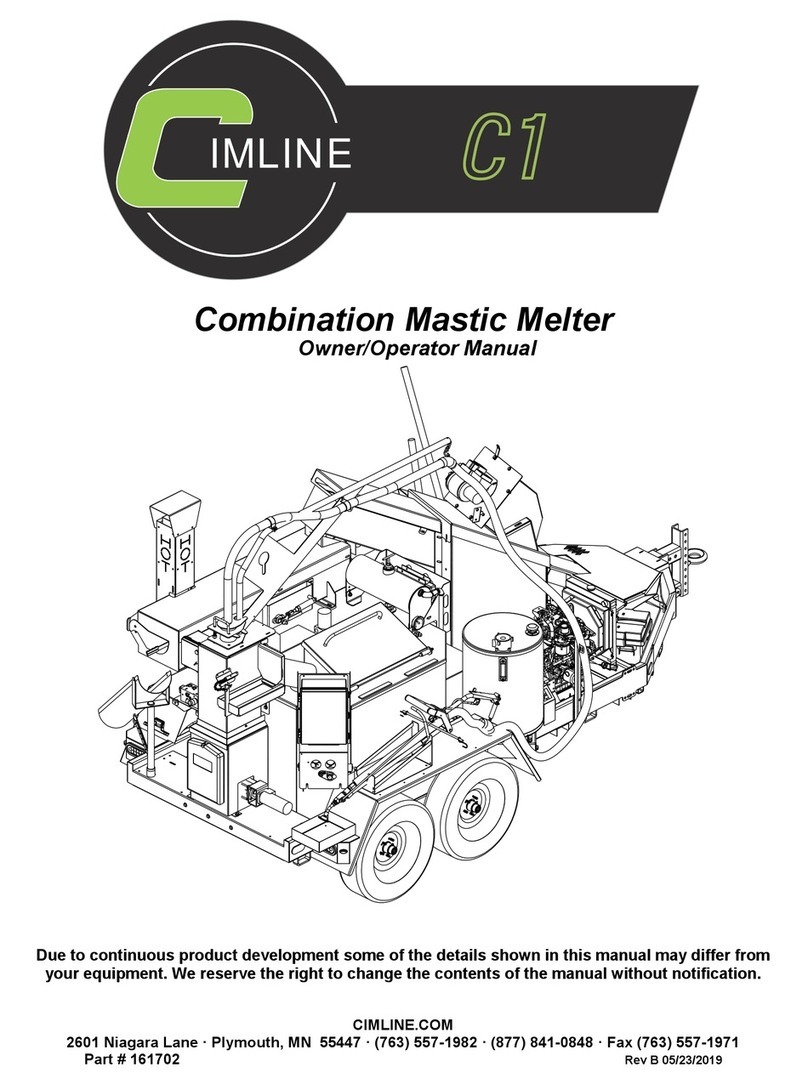
CIMLINE
CIMLINE C1 Owner's/operator's manual
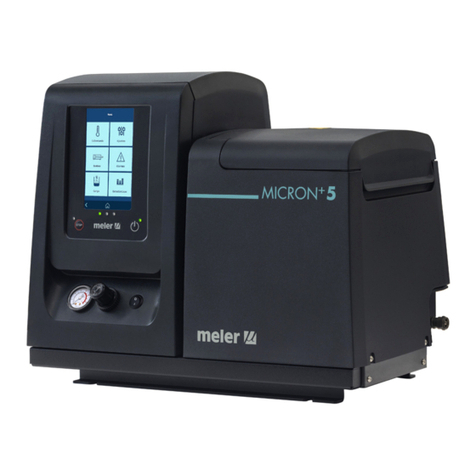
Meler
Meler Micron+ Series instruction manual

Railway Equipment
Railway Equipment 955 operating manual
